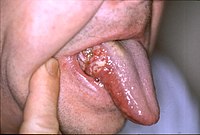
Long non-coding RNA HAGLROS facilitates the malignant phenotypes of NSCLC cells via repressing miR-100 and up-regulating SMARCA5
Sign Up to like & getrecommendations! Published in 2020 at "Biomedical journal"
DOI: 10.1016/j.bj.2020.12.008
Abstract: Abstract Background Long non-coding RNA (lncRNA) is implicated in the progression of multiple cancers. This study aimed to explore the expression characteristics, biological function and molecular mechanism of lncRNA HAGLROS expression in NSCLC. Methods Quantitative… read more here.
Keywords: phenotypes nsclc; nsclc cells; smarca5; expression ... See more keywords

Single-Cell Characterization of Malignant Phenotypes and Developmental Trajectories of Adrenal Neuroblastoma.
Sign Up to like & getrecommendations! Published in 2020 at "Cancer cell"
DOI: 10.1016/j.ccell.2020.08.014
Abstract: Neuroblastoma (NB), which is a subtype of neural-crest-derived malignancy, is the most common extracranial solid tumor occurring in childhood. Despite extensive research, the underlying developmental origin of NB remains unclear. Using single-cell RNA sequencing, we… read more here.
Keywords: single cell; characterization malignant; developmental trajectories; malignant phenotypes ... See more keywords

Hyaluronic acid synthase 2 promotes malignant phenotypes of colorectal cancer cells through transforming growth factor beta signaling
Sign Up to like & getrecommendations! Published in 2019 at "Cancer Science"
DOI: 10.1111/cas.14070
Abstract: Hyaluronic acid synthase 2 (HAS2) is suggested to play a critical role in malignancy and is abnormally expressed in many carcinomas. However, its role in colorectal cancer (CRC) malignancy and specific signaling mechanisms remain obscure.… read more here.
Keywords: has2; colorectal cancer; acid synthase; hyaluronic acid ... See more keywords

Redistribution of EZH2 promotes malignant phenotypes by rewiring developmental programmes
Sign Up to like & getrecommendations! Published in 2019 at "EMBO Reports"
DOI: 10.15252/embr.201948155
Abstract: Epigenetic regulators are often hijacked by cancer cells to sustain malignant phenotypes. How cells repurpose key regulators of cell identity as tumour‐promoting factors is unclear. The antithetic role of the Polycomb component EZH2 in normal… read more here.
Keywords: ezh2 promotes; rewiring developmental; phenotypes rewiring; malignant phenotypes ... See more keywords

Identification of Pannexin 2 as a Novel Marker Correlating with Ferroptosis and Malignant Phenotypes of Prostate Cancer Cells
Sign Up to like & getrecommendations! Published in 2020 at "OncoTargets and therapy"
DOI: 10.2147/ott.s249752
Abstract: Purpose Prostate cancer (PCa) is a widespread urinary neoplasm and one of the most prevalent and second most frequent malignancies diagnosed in males worldwide. This study aimed to identify a candidate marker and explore its… read more here.
Keywords: expression; pca; marker; prostate cancer ... See more keywords

Targeting the LINC00324/miR-16-5p/SEPT2 Signaling Cascade is Effective to Reverse Malignant Phenotypes in Glioblastoma.
Sign Up to like & getrecommendations! Published in 2023 at "Anti-cancer agents in medicinal chemistry"
DOI: 10.2174/1871520623666230228122519
Abstract: Background Long non-coding RNAs (LncRNAs) are identified as pivotal regulators and biomarkers for glioblastoma (GBM). However, the role of a novel LncRNA LINC00324 in regulating GBM progression has not been fully studied in the existing… read more here.
Keywords: linc00324; sept2; malignant phenotypes; targeting linc00324 ... See more keywords

MicroRNA-340-5p inhibits the malignant phenotypes of osteosarcoma by directly targeting NRF2 and deactivating the PI3K/AKT pathway.
Sign Up to like & getrecommendations! Published in 2021 at "European review for medical and pharmacological sciences"
DOI: 10.26355/eurrev_202105_25932
Abstract: OBJECTIVE The aim of the study was to examine the effects and potential mechanisms of miR-340-5p in Osteosarcoma (OS) progression. PATIENTS AND METHODS qRT-PCR was applied to detect expressions of miR-340-5p and NRF2 mRNA. MTT… read more here.
Keywords: pi3k akt; targeting nrf2; malignant phenotypes; mir 340 ... See more keywords

MicroRNA-1-3p Suppresses Malignant Phenotypes of Ameloblastoma Through Down-Regulating Lysosomal Associated Membrane Protein 2-Mediated Autophagy
Sign Up to like & getrecommendations! Published in 2021 at "Frontiers in Medicine"
DOI: 10.3389/fmed.2021.670188
Abstract: Objective: Several clinical trials have suggested that autophagy inhibition is a promising approach for cancer therapy. However, the implications of autophagy in ameloblastoma (AB) remain undiscovered. This study investigated the dysregulated autophagy and its regulatory… read more here.
Keywords: protein; mediated autophagy; lysosomal associated; associated membrane ... See more keywords

Agonists Specific for κ-Opioid Receptor Induces Apoptosis of HCC Cells Through Enhanced Endoplasmic Reticulum Stress
Sign Up to like & getrecommendations! Published in 2022 at "Frontiers in Oncology"
DOI: 10.3389/fonc.2022.844214
Abstract: Cancer pain is an important factor affecting life quality of patients especially in the advanced stage and relieving pain is one of fundamental strategies for cancer treatment. Opioids such as morphine are the most widely… read more here.
Keywords: hcc cells; hcc; malignant phenotypes; mor ... See more keywords

USP39 promotes ovarian cancer malignant phenotypes and carboplatin chemoresistance.
Sign Up to like & getrecommendations! Published in 2019 at "International journal of oncology"
DOI: 10.3892/ijo.2019.4818
Abstract: Ubiquitin‑specific protease 39 (USP39), as one of the deubiquitinating enzymes (DUBs), exhibits aberrant an expression and has oncogenic functions in several types of cancer. However, the function and underlying molecular mechanisms of action of USP39 in ovarian… read more here.
Keywords: cell; cancer malignant; phenotypes carboplatin; ovarian cancer ... See more keywords

Piperlongumine inhibits cancer stem cell properties and regulates multiple malignant phenotypes in oral cancer.
Sign Up to like & getrecommendations! Published in 2018 at "Oncology letters"
DOI: 10.3892/ol.2017.7486
Abstract: Piperlongumine (PL), a natural product of Piper longum, inhibits multiple malignant phenotypes. Therefore, the present study examined whether PL suppresses cancer stemness in oral cancer. The cellular effects of PL were determined by examining alterations… read more here.
Keywords: cancer stem; cell; oral cancer; multiple malignant ... See more keywords